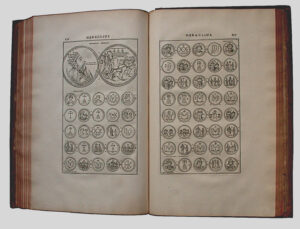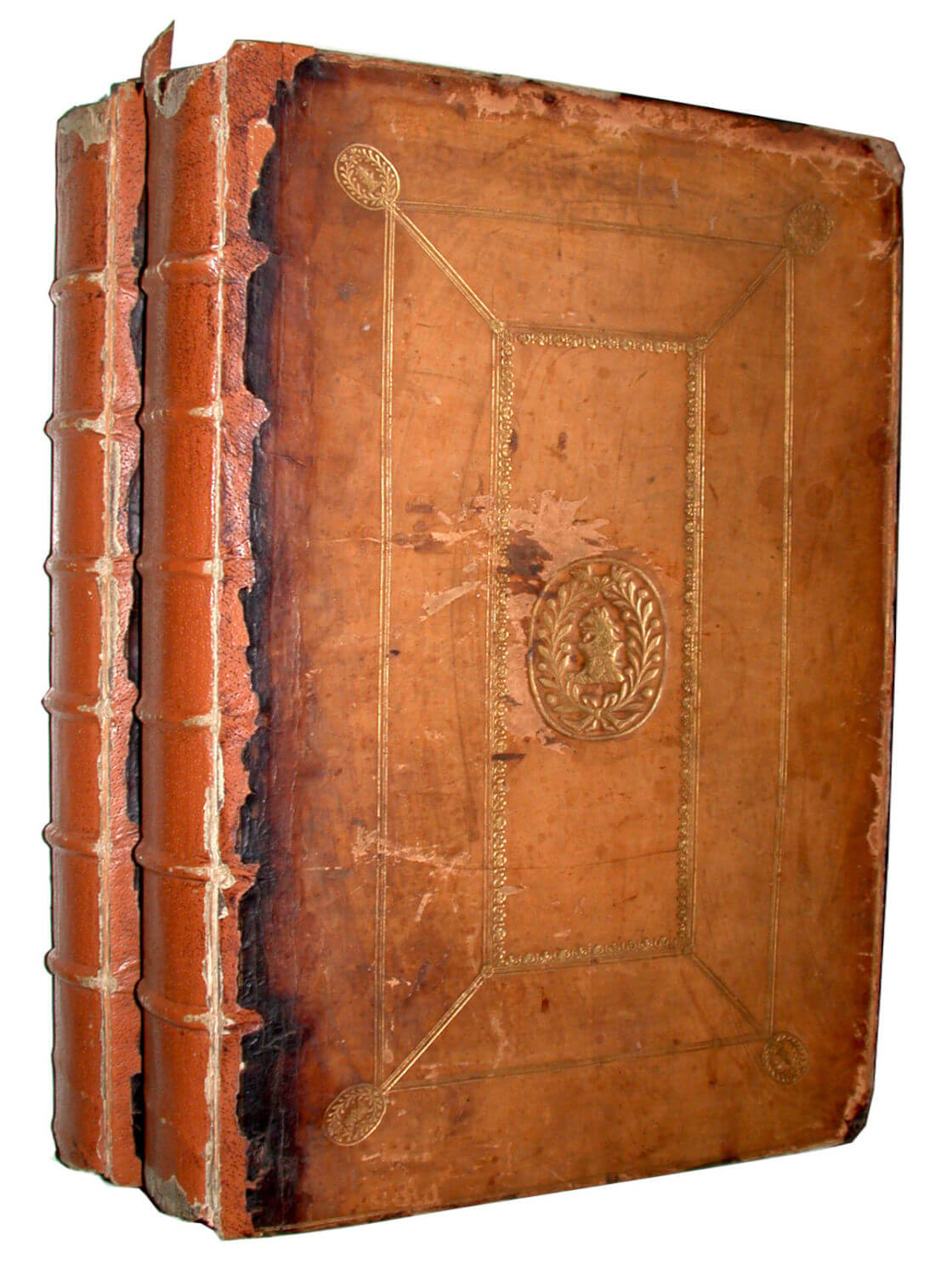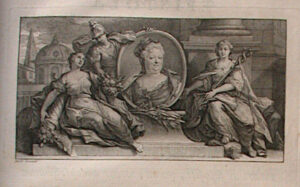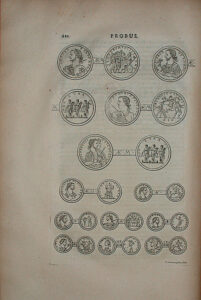Anselmo Banduri: Researcher on the Coinage of Late Antiquity
That such an overview is possible is also due to the pioneering work of a Benedictine monk, Anselmo Banduri (Anselmus Bandurius), who was born as Matija Banduri in 1671 or 1675 in the Republic of Ragusa, today’s Dubrovnik in Southern Croatia. Banduri came to Rome when still very young and subsequently studied in Naples, Florence and, from 1702, in Paris, where came under the influence of Bernhard de Montfaucon (1655-1741), a Benedictine monk and scholar who is regarded as the founder of the science of paleography, the study of ancient manuscripts. After publishing a work on the antiquities of Constantinople based on Byzantine Greek manuscripts, of which many had only just been discovered after centuries of neglect, Banduri turned his attention to coinage and in 1718, in his mid-forties, published his Numismata Imperatorum Romanorum a Trajano Decio ad Palaeologos Augusto in Paris, which he dedicated to the sister-in-law of the King of France, Louis XIV, Elisabeth Charlotte countess of Orléans, better known from her German name, Liselotte von der Pfalz (1652-1722), and her son Philip. Practically, the French Royal Family also provided the financial backing for such an expensively produced study.
This two-volume, more as 1,300-page long work (weighing more than 12 kilograms!) is one of the earliest studies which specifically deals with the later Roman emperors – as the title announces, from the reign of Trajan Decius (249-251) to the last Byzantine emperor, Constantine XI. Palaeologos (1449-1453) at the end of whose reign Byzantium fell to the Ottomans – more than 1200 years of history. Most historians started with the foundation of Rome or the start of the Roman Empire, and many concentrated on the first and second centuries as the later period was traditionally seen as culturally and morally degenerate.
Of course, Banduri did not have the same understanding of coin finds, historiography, metallurgy or archaeology that we have today. Hilarius Eckhel had not yet published his eight-volume work laying out a structure for the study of ancient numismatics (that came in 1792-1798), and Edward Gibbon had not yet published his monumental history The Decline and Fall of the Roman Empire (that followed in 1776-1788). Nevertheless, the preface to his study gives an overview of the work of many predecessors (there is a full list on pp. cxxvii-iii, including such figures as Occo, Goltzius, Spanheim, Mediobarbus and Foy-Vaillant)- Banduri was well aware that he was working in an established scholarly tradition and was as familiar with the secondary literature in his field as he was with the primary texts. He also records the collections and places where he found the coin specimens (e.g. Farnese, Regius, Le Roy, Brandenburg) and often indicates the coins he thinks are especially rare.

A spread side dealing with the coins of the Emperor Heraclius (610-641), including the well-known postumous medal of 1402, which antiquarians long took to be ancient.
Banduri approaches the field of 3rd Century numismatics with much openness. He narrates the historical background of each emperor based on the works of ancient authors including Orosius, Zosimus and Aurelius Victor. He provides an overview of the coinage of each emperor divided into gold, silver and bronze issues, as well as „maximi moduli, vulgò Medaglioni“ (exact size and weight do not yet play an issue). He discusses questions such as the perplexing coins of Gallienus with the name apparently in the female form, GALLIENAE AVGVSTAE, or whether the abbreviation GM in the legend on the VICTORIA GERMAN coins of Claudius Gothicus stands for GOTHICVS MAXIMVS or GERMANICVS MAXIMVS. As is to be expected, he cannot always distinguish between original coins and local imitations or „barbarous radiates, “ which is clear in his treatment of the coins of Tetricus I and II., where he includes several barbarized legends. In the case of the usurper Aureolus, who served in the army of Gallienus as magister equitum in Milan and switched sides to serve with Postumus, Banduri seems to have created his own fantasy coin with the legende IMP C AVREOLVS AVG (p. 327), far removed from the antoniniane with a particular style of Postumus portrait and in the name of Postumus, which later scholars such as Marcus Weder have attributed to Aureolus.
Although it is naturally not possible for Banduri, reliant as he is on engravers to produce his images, to illustrate all the coins he mentions, his work is richly illustrated for its time (having been financed by the King of France!), with copperplate engravings by P. Giffart and P. Simmoneau fils. And the overwhelming majority of the clear, but detailed images are true to life- it is still possible to identify coins by them today, as is the case with the many varieties of Probus busts which he illustrates (although he is unable to identify the mints).
All in all, we have here an appealing and rarely found early work on numismatics which, even if it is not a Zitierwerk by today‘s standards, marks an important development in the history of 3rd Century numismatics and is also an attractive book in its own right. The copy which is up for sale in the latest auction of Münzen & Medaillen GmbH, Weil am Rhein is bound in leather with gold ornamentation, and although the spine has been repaired, the 12 Kg. Book is still impressive, with a coat of arms on the cover and bookplate from William Charles de Meuron, 7th Earl Fitzwilliam (1872-1943), one of the richest men of his day in Great Britain, owning land, industry and mineral rights worth more than 3.3. Billion pounds in today’s terms.
Münzen & Medaillen GmbH Electronic Auction 1 will take place entirely online, organised by Biddr on Friday 25th June, starting at 18.00 CET. The sale features the library of a professional numismatist, put together over a period of many years, and consists of 495 lots of numismatic literature, with a particular emphasis on Greek, Roman and Celtic numismatics. Images and descriptions of the lots can be found on the biddr website where bids can also be placed in advance.










